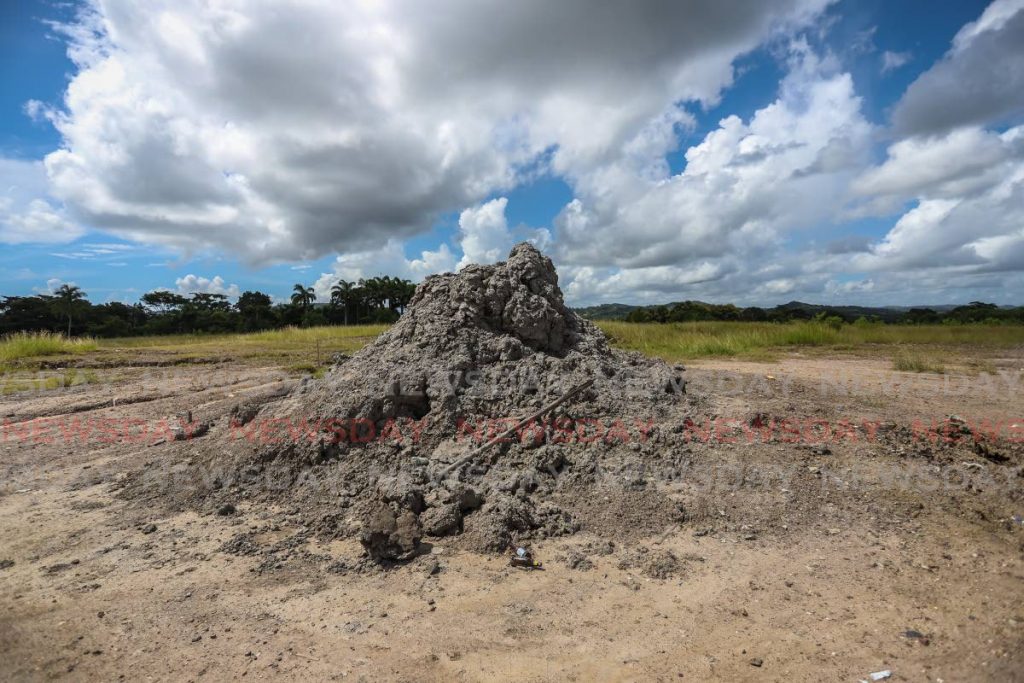Is a mud volcano still a volcano?

A volcano is defined as a mountainous feature where molten lava, hot ash, rocks and gases erupt from the earth. They can be found both on the surface of the earth and on the seafloor. La Soufrière on the island of St Vincent is one of several volcanoes that are part of the Lesser Antilles and currently, it is the only one showing any signs of activity. Volcanoes occur at the boundaries of the tectonic plates that make up the earth’s crust or uppermost layer. In the Lesser Antilles, volcanoes are formed due to a process called plate subduction where the North Atlantic Plate is being pushed below the Caribbean Plate. As the plate moves downward, closer to the hotter mantle of the earth, temperatures rise, and the rocks that make up the plates slowly melt and form magma, which eventually rises to surface to form volcanoes. Lava is what we call magma that has breached the surface. This rising magma is very viscous, rises slowly and sometimes forms a plug within the volcano that tends to trap a lot of hot rock and gas behind it. These plugs are slowly squeezed out as tall spines or as domes, and when they fail an eruption may occur.
Neither Trinidad nor Tobago has volcanoes like La Soufrière because our geological history is not the same as that of the Lesser Antilles island arc. Subduction of plates does not occur here, hence there is no magma that can rise to the surface and create volcanoes.
However, we do have mud volcanoes in as many as 28 areas onshore Trinidad. Many of them currently show no activity, while others quietly eject liquid mud, muddy water or bubbles of natural gas. Only the Digity mud volcano in Penal/Debe has a clearly defined cone that is around 15 feet high, while most are either large mud-filled pools or small cones a few inches high. Occasionally, there are large eruptions that last a few minutes, with the most recent occurring at the Devil’s Woodyard in 2018 and in Tabaquite in 2019 where erupting liquid mud and gas covered 2.8 and 1.7 acres respectively. Off Trinidad’s east coast, hundreds of mud volcanoes can be found on the seafloor, some as large as Naparima Hill in San Fernando.
Mud volcanoes tend to occur in zones that have thick layers of clays, oil and natural gas, where rocks are also being squeezed or compressed. The Trinidad area is within such a zone, between the South American and Caribbean Plates, where the Caribbean Plate is sliding horizontally past the South American plate. This type of plate boundary is called a transform plate boundary, and since no plate is being subducted beneath each other no melting or volcanic activity can take place. The horizontal motion however, causes compression and this is what created Trinidad’s modern-day Central and Southern Ranges – a discontinuous chain of low hills where most of the mud volcanoes occur. The compression within these hills is responsible for the buildup of pressure of the trapped oil and natural gas within the rocks, primarily made up of clays, and when the pressure reaches a critical level, it is released through weaknesses or faults in the rocks, and rises to the surface through these faults, forming mud volcanoes.
Are mud and magmatic volcanoes related in any way? The short answer is usually no. Magmatic volcanoes erupt molten rock, large blocks of rock, ash and superheated gases that may be thousands of degrees centigrade. Mud volcanoes emit liquid mud and water that tend to be a few degrees below the atmospheric temperature. This is caused by the expansion of gas bubbles in the mud which causes cooling. There are few areas in the world that have mud volcanoes that emit hot mud, and these are all associated with nearby magmatic volcanoes. Where thick ash layers exist, hot groundwater and rising steam sweep along and liquefy the ash, rising to the surface to form cones or pools of hot mud as in New Zealand and Indonesia.
In a 1911 eruption at Wilkey’s Island off the south coast of Trinidad, escaping gas caught fire, flames reportedly reached 1,000 ft high and incredibly, were allegedly visible in Port of Spain about 50 miles away. This island mysteriously appeared in the waters off Chatham and was later categorized as a mud volcano. It eroded and disappeared back under the sea. Over the decades, Wilkey’s Island has reappeared several times.
Unlike our Vincentian neighbors, we do not have to worry about the direct impacts of magmatic volcanoes here in TT. As the relevant authorities continue to monitor the situation at La Soufrière, we are hopeful that no explosive eruption will occur.
The Geological Society of Trinidad and Tobago is a professional and technical organisation for geologists, other scientists, managers and individuals engaged in the fields of hydrocarbon exploration, academia, volcanology, seismology, earthquake engineering, environmental geology, geological engineering and the exploration and development of non-petroleum mineral resources.


Comments
"Is a mud volcano still a volcano?"